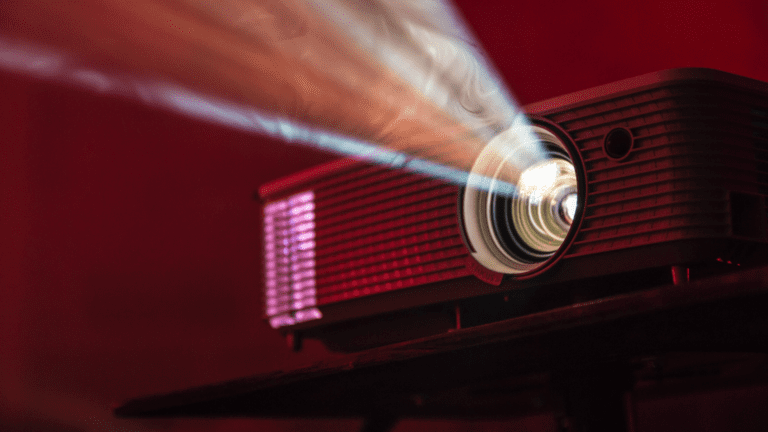
Iain Scott
CEO // Founding Partner
Iain has a strong background in digital, and brings high-level strategic thinking to client campaigns.

Iain Scott explores the psychology of awareness, which underpins the awareness stage of any company's digital marketing.
In the early 1900s, Hollywood was making its mark as the home of moviemaking. Aspiring actors were flooding the streets, small studios were consolidating into industry giants, and the once small LA neighbourhood’s population was growing rapidly.
By 1923, Los Angeles Times publisher Harry Chandler had funded the construction of a lavish residential development nearby. It was named “Hollywoodland,” and sat on a hill overlooking Hollywood itself.
Chandler’s goal was to make sure as many people working in Hollywood knew of the existence of his new, luxurious out-of-town living option. It was that goal which led him to fund the construction of a huge white “Hollywoodland” sign on the hill, shining brightly and easily visible from the city below.
That sign attempted to solve the first and often biggest challenge that all marketers face:
You need to bring awareness to strangers.
Despite its simplicity, the Hollywoodland sign – later shortened to the Hollywood sign we know today – is one of the most memorable man-made landmarks in the world. Its impact continues to be felt 100 years later. It was a huge, costly undertaking, but one with a clear, singular purpose.
Harry Chandler wanted to maximise the return he would get on his investment in the development of Hollywoodland. Before he could do that, however, he had to create awareness of the new development among the uninformed residents and visitors down in the city – and fast.
The fundamentals which led Harry Chandler to build the Hollywood sign are still relevant today in digital marketing. The objective is the same, the impact is the same, and the psychology is the same. It’s only how we do it that has drastically changed. Both the Hollywoodland sign campaign and the retail development itself were a success. To understand why, you need to understand the psychology of awareness.
In this series, we are exploring the psychology behind each stage of the flywheel. Just like Harry Chandler, the first stage in your marketing will always be the awareness stage. In this article, we will explain the psychology underlying the “See” stage, also known as the awareness stage, and how it can help your organisation gain the visibility it needs to have Hollywood sign levels of success.
Put simply, awareness is a state-of-mind. It is having a well-informed interest in a particular situation, service, product or development. This is the commonly accepted first stage of any buyer journey.
You cannot deliberately purchase something without first being aware of its existence.
To understand the psychological role awareness plays in the See stage of the marketing flywheel, we need to understand the stages of awareness itself.
David Aaker’s Awareness Pyramid maps out the four distinct stages of awareness:

Let’s start from the bottom and work our way up:
It’s important to note that we’re still referring only to awareness. Nothing in the Awareness Pyramid should be viewed as consideration or “Think” stage content – where people are considering the use of your company’s service, or taking an action that directly results in a purchase.
From no awareness to top of mind, all your marketing activity at this stage will be purely awareness-focused.
The top of mind stage can be achieved well before any of our target audience is even considering purchasing.
In many consumer products, top of mind awareness is often simpler to imagine and easier to see than it is for services.
Consider the following products and services. For each one, think of the first brand, product or service that comes to mind:
Almost everyone has the same answers. That’s because McDonald’s, Apple, Google and Uber spend billions of dollars each on global marketing every year – and necessarily so (Tesla doesn’t, but we’ll get to that later).
For many companies, being top of mind is critical to their business. Why? Because without awareness, the buyer journey just can’t start.
Here are three psychological reasons why the See stage – AKA the awareness stage – of the buyer journey can be so critical:
Repetition bias is the tendency to believe something is correct, simply because it is mentioned, seen or observed repeatedly. In marketing, it’s colloquially referred to as “The Rule of 7.” It takes seeing seven instances of the same message for the observer or reader to truly consider and comprehend it. Many studies confirm that repeated exposure to something (a person, a message, a brand, a sound) makes it more pleasant to experience.
This is often referred to as the mere-exposure effect, a psychological phenomenon wherein humans develop a preference for things that they have seen or heard before or are otherwise familiar with. Working together, repetition and familiarity in your marketing is a strong predictor of heightened awareness of your services.
When you look back at Aaker’s Awareness Pyramid, notice that brand loyalty is not one of the four stages. Loyalty isn’t the same as top of mind or any other stage of awareness. Loyalty is about trust. Loyalty brings customers and clients back based on additional or unique rewards (think loyalty cards that accumulate points with each purchase) or memorable positive experiences (like great service delivery).
In almost all cases there are many steps within the marketing flywheel that need to be taken before clients put money into your bank account. Awareness is only the first stage, and many organisations that successfully create awareness through their marketing activity still don’t move their audience to the next stage in the flywheel. You end up with friction, as opposed to the momentum you want your marketing to have.
While understanding the psychology of awareness is crucial, it is just one part of the flywheel. Let’s look back at some of the example businesses we mentioned earlier to demonstrate why.
McDonald’s is the world’s largest restaurant chain with over 40,000 locations worldwide. The company has been the subject of damming documentaries and film dramatisations. Their logo lights up high streets. Their presence is acknowledged in over 100 countries.
Yet, not everyone has eaten there. You might have friends who refuse to take their children to McDonald’s, for example, citing nutritional or health issues. Crucially, however, awareness of McDonald’s still exists. In fact, McDonald’s may still be top of mind for those who refuse to eat there. That’s the power of brand awareness. However, it also shows how an audience that is aware is not always an audience that is ready to consider or buy a product or service.
Apple’s iPhone quickly became the biggest selling smartphone of the 21st century, with over a billion iPhone users by 2020. That’s almost 15% of the world’s population who have an iPhone in their hand, in their pocket or on their bedside table right now.
Yet, over 6.5 billion people own a smartphone. That’s around 80-85% of the world’s population – a far higher percentage than the 15% that own an iPhone. While a proportion of those 80-85% may have once owned an iPhone, we can assume that many more have never owned one. So again, remember:
An audience that is aware is not necessarily an audience that is ready to consider or buy.
What about the electric car manufacturer Tesla? In 2022, Tesla surpassed a $1trillion valuation. Yet, as we mentioned earlier, their advertising spend for the same year was $0. Despite the fact that all other major car manufacturers spent millions on advertising, famously Tesla spent nothing.
You might assume that successful marketing doesn’t need to be expensive marketing, or that spending on awareness stage marketing activity is fruitless. The important learning here is not around spend, however. In fact, ad spend should be low and ROAS should be high. The lesson is about awareness.
With over 2 million Tesla cars being driven around, countless press attention on the company, and Elon Musk’s 106 million social media followersawareness and visibility is still a key factor in the buying journey of their customers. It’s a great example of the cyclical nature of the flywheel, which connects the Trust and See stages to bring more of our target audience into the buying process.
While Awareness refers specifically to the type of messaging, let’s look at the type of audience that this stage targets: Strangers.
Earlier, I referred to the mere-exposure effect – the tendency to believe something is correct, simply because it is mentioned, seen, or observed repeatedly.
This effect works because, according to behavioural psychologist Daniel Kahneman, we have two systems in our brains. The first system makes decisions quickly, and is connected to our subconscious. It’s highly reflexive, and reactions can appear irrational or based on emotion rather than logic. This is a crucial survival instinct, as new or unfamiliar things (new people, new surroundings, new items) should be treated with caution.
The second system manages deeper, more meaningful thought that reviews the facts and wider available information, and is connected to our conscious mind. Reactions and decisions appear rational, logical and can be easily justified. A repeated message creates a sense of familiarity. Seeing a message again tricks the first cognitive system into believing it’s safe or can be trusted. When it comes to a repeated message, this trustworthiness creates the illusion of truth, regardless of whether the message is true or not.
This is product, service, or brand awareness in action. In order to move your audience to the second stage in the marketing flywheel, you must first become familiar or known to the extent that they are ready to consider you and think more about how you can add value.
So how does this apply to your marketing activity as a professional services provider?
With multinational organisations selling consumers millions of products and services, you don’t have to look far to see the See stage in action. As we’ve explored, awareness is an important and business-critical ingredient in their marketing strategy, and constantly being top of mind is at the forefront of their activity.
For law firms, financial services organisations and companies working in sectors such as healthcare, smart energy, property, technology, marketing, and communications, the See stage is just as important. The only difference is how we apply it and the activity that results in successful movement around our flywheel.
Remember, our objective in this stage is to bring awareness to strangers. When we employ forces that achieve this – digital marketing activities that create and/or maintain momentum in our flywheel – strangers become prospects who begin to consider what we offer.
If you want to see what the See stage looks like in action, you need to learn what the digital marketing flywheel looks like in action.
In my next article in this series, we will explore the psychology behind the Think stage – AKA the consideration stage – of the digital marketing flywheel.
If you want us to show you what the marketing flywheel would look like for your business, get in contact.

CEO // Founding Partner
Iain has a strong background in digital, and brings high-level strategic thinking to client campaigns.
View my other articles and opinion pieces below
When were the first commercial solar panels installed? The noughties? The ‘90s? If you guessed the ‘80s, you’re half right… but half wrong. Boston-born inventor Charles Fritts installed the first solar array on a New York City rooftop in the 1880s. Fritts’s panels weren’t just a science experiment. They were a genuine attempt to commercialise […]

We see it all the time. Your company is spending money on a digital marketing campaign – Google Ads, social media, email marketing, SEO and more – but you just aren’t seeing the strong return on investment that you were promised. In this article, I will explain why the marketing model used by most businesses […]

The digital marketing flywheel is a model which will help your business win more work by leading people through distinct phases, each with their own marketing activities and audience: the See stage, the Think stage, the Do stage and the Trust stage. But the buyer journey isn’t always linear. People don’t always see your service, […]
